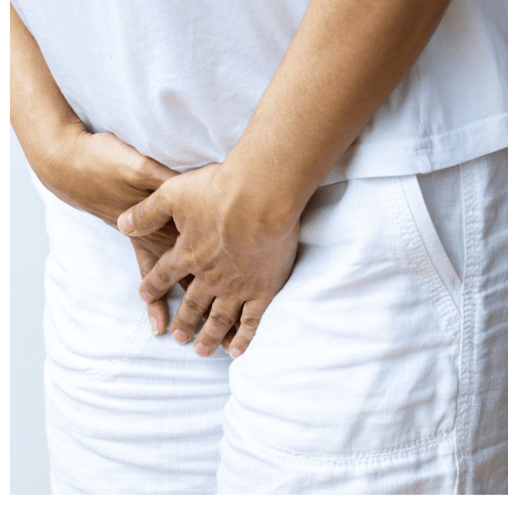
Understanding the Different Types of Incontinence and How Adult Diapers Can Help
Share
1st July 2024
Incontinence is a common and often distressing condition that affects millions of individuals worldwide. It can significantly impact one's quality of life, but with the right understanding and management strategies, individuals can lead fulfilling lives. In this comprehensive guide, we'll explore the various types of incontinence, the importance of support for those affected, how adult diapers work, and the distinctions between diapers and incontinence pads.
1. Types of Incontinence
Incontinence is not a one-size-fits-all condition. There are four primary types:
Stress Incontinence: This occurs when there is pressure or stress on the bladder, leading to urine leakage. Common triggers include sneezing, coughing, laughing, or lifting heavy objects.
Urge Incontinence: Also known as overactive bladder, urge incontinence involves a sudden, intense urge to urinate, often followed by involuntary urine leakage. It can be caused by neurological conditions, bladder irritation, or certain medications.
Overflow Incontinence: This occurs when the bladder doesn't empty completely, leading to frequent or constant dribbling of urine. It's often associated with conditions that obstruct urine flow, such as an enlarged prostate in men or urinary tract blockages.
Functional Incontinence: In this type, physical or cognitive impairments prevent a person from reaching the toilet in time. It can be due to mobility issues, dementia, or other conditions that limit the individual's ability to control bladder function.
Understanding the specific type of incontinence is crucial for developing an effective management plan tailored to the individual's needs.
2. What is Incontinence and How to Support Individuals
Incontinence refers to the inability to control urination or bowel movements, leading to involuntary leakage. It can occur at any age but is more common among older adults due to factors such as weakened pelvic muscles, hormonal changes, or underlying health conditions.
Supporting individuals with incontinence involves creating a supportive and understanding environment. Here are some essential strategies:
- Encourage open communication: Individuals with incontinence may feel embarrassed or ashamed. It's essential to create a safe space where they can discuss their concerns and needs without fear of judgment.
- Provide access to resources: Educate individuals about incontinence management techniques, including pelvic floor exercises, dietary modifications, and the use of protective garments such as Hapicura adult Comfort Diapers.
- Ensure accessibility: Make sure bathrooms are easily accessible and equipped with necessary aids such as grab bars and raised toilet seats for individuals with mobility challenges.
- Offer emotional support: Living with incontinence can be emotionally challenging. Be empathetic and offer encouragement and emotional support to help individuals cope with their condition.
3. How Adult Diapers Work
Adult diapers, also known as absorbent briefs or incontinence briefs, are specially designed garments worn by individuals experiencing urinary or fecal incontinence. They are designed to absorb and contain bodily fluids, providing protection against leaks and odors.
The primary components of adult diapers include:
- Absorbent core: This is the inner layer of the diaper responsible for soaking up urine or feces. It is typically made of super-absorbent polymers that can hold large volumes of liquid while keeping the skin dry.
- Waterproof outer layer: The outer shell of the diaper is waterproof, preventing leaks and protecting clothing and bedding from moisture.
- 3D Anti-leak guards, Elastic leg cuffs and waistbands: These features help ensure a snug and comfortable fit, reducing the risk of leakage and providing freedom of movement.
Adult diapers come in various sizes and absorbency levels to accommodate individual needs. They are discreet and can be worn underneath regular clothing, allowing individuals to maintain their dignity and independence.
4. Difference Between Diapers and Incontinence Pads
While adult diapers and incontinence pads serve similar purposes, there are key differences between the two:
- Size and Absorbency: Adult diapers are larger and more absorbent than incontinence pads, making them suitable for individuals with moderate to severe incontinence. In contrast, incontinence pads are smaller and thinner, designed for light to moderate leakage.
- Design: Adult diapers typically feature a brief-style design with elastic leg cuffs and waistbands for a secure fit. Incontinence pads, on the other hand, are shaped like sanitary napkins and can be worn with regular underwear.
- Flexibility: Incontinence pads offer greater flexibility and discretion, making them ideal for individuals who prefer minimal bulkiness or need protection during specific activities.
In summary, while both adult diapers and incontinence pads serve as effective management tools for incontinence, the choice between the two depends on the individual's needs and preferences.
Conclusion
Incontinence is a prevalent yet manageable condition that requires understanding, support, and effective management strategies. By recognising the different types of incontinence, providing empathetic support, understanding how adult diapers work, and distinguishing between diapers and incontinence pads, individuals can take proactive steps towards improved quality of life and independence.Explore our range of Hapicura Adult Comfort Diapers, available in single packs and convenient bundles, designed to provide comfort, confidence, and peace of mind for individuals managing incontinence.
